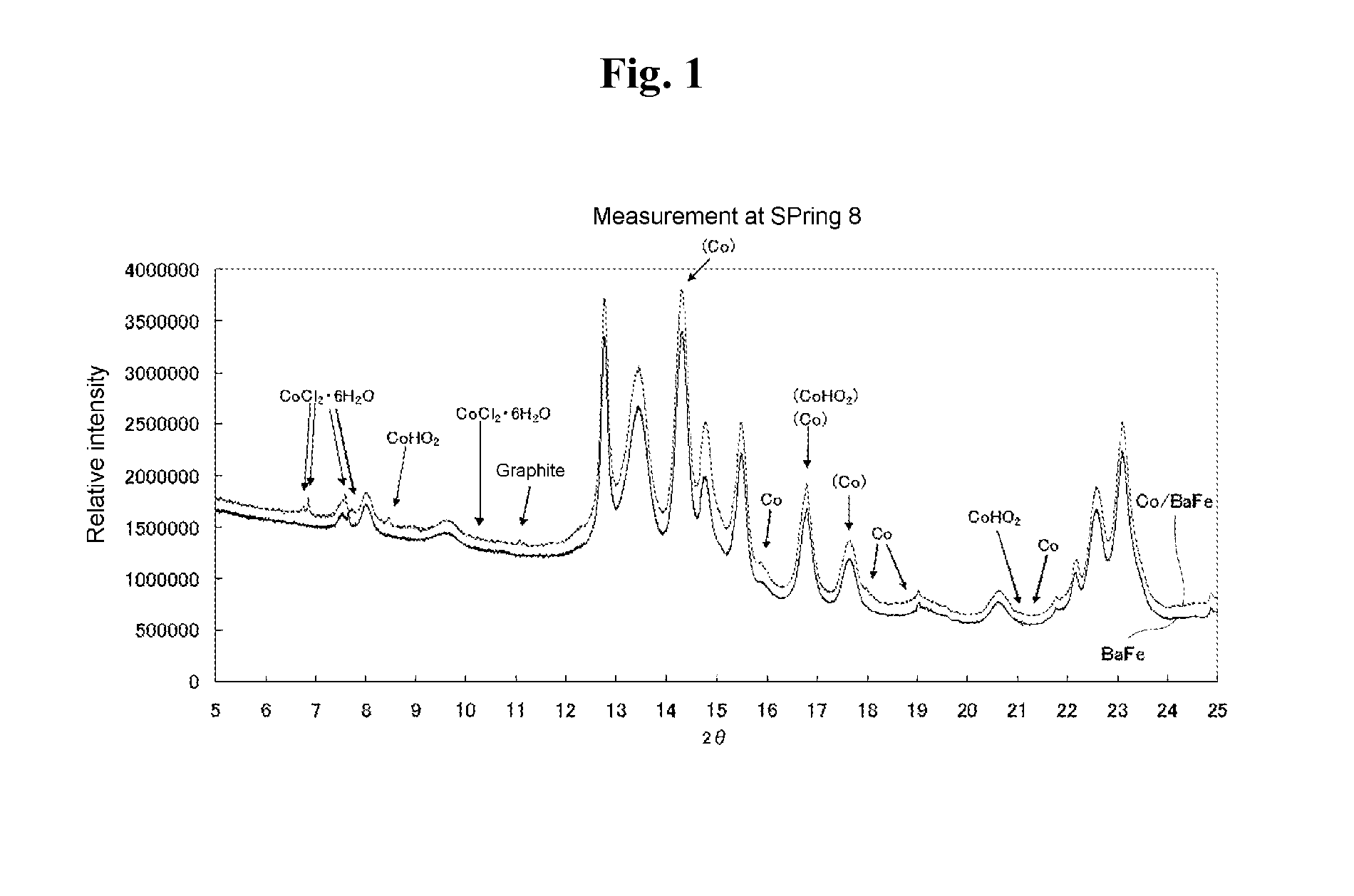Magnetic recording medium
a recording medium and magnetic technology, applied in the field of magnetic recording mediums, can solve the problems of compromising recording properties, compromising the reliability of reproduced signals, and recording attenuation, and achieve the effect of good recording properties and high thermal stability in a magnetic layer
- Summary
- Abstract
- Description
- Claims
- Application Information
AI Technical Summary
Benefits of technology
Problems solved by technology
Method used
Image
Examples
examples
[0130]The present invention will be described in detail below based on Examples. However, the present invention is not limited to the examples.
reference examples 1 to 8
Preparation Examples Employing Nd2Fe14B as the Hard Magnetic Phase
[0131]Magnetic powder comprised of gathering hard magnetic particles of Nd2Fe14B composition that had been prepared by HDDR method (Hc: 734 kA / m, saturation magnetization: 1.42×10−1 A·m2 / g (142 emu / g), average crystal particle diameter: 100 nm) was immersed in the salt solution (0.5 g of solution per gram of magnetic powder) indicated in Table 1 in such a manner as to wet the surface of the particles, and heated to 110° C. in a nitrogen atmosphere to remove the solvent. In this process, the particles in the salt solution were stirred once every 30 minutes.
[0132]The dry powder obtained by removing the solvent was processed for one hour at 400° C. in a hydrogen gas flow to subject to reductive decomposition the Fe salt contained in the deposition on the surface of the particles. During reductive decomposition, the hydrogen gas that was discharged contained by-products during the course of salt decomposition, and was thu...
reference examples 9 to 12
Preparation Examples Employing Barium Ferrite as the Hard Magnetic Phase
[0146]Magnetic powder comprised of gatheing particles of barium ferrite (referred to as “BaFe” hereinafter) (Hc: 270 kA / m, saturation magnetization: 5.2×10−2 A·m2 / g (52 emu / g), average plate diameter: 35 nm, average plate thickness: 8 nm) was immersed in the salt solution (1 gram of solution per gram of BaFe powder) described in Table 2 so as to wet the surface of the particles. The solvent was removed while reducing the pressure with an aspirator. In this process, the particles in the salt solution were stirred once every 30 minutes.
[0147]The dry powder obtained by removing the solvent was processed for one hour at 400° C. in a 4 volume percent methane 96 volume percent nitrogen gas flow to conduct reductive decomposition of the Co salt or the Fe salt contained in the deposition of the particle surface.
[0148]The above step yielded a magnetic powder comprised of gathering core / shell magnetic particles with cores...
PUM
 Login to View More
Login to View More Abstract
Description
Claims
Application Information
 Login to View More
Login to View More - R&D
- Intellectual Property
- Life Sciences
- Materials
- Tech Scout
- Unparalleled Data Quality
- Higher Quality Content
- 60% Fewer Hallucinations
Browse by: Latest US Patents, China's latest patents, Technical Efficacy Thesaurus, Application Domain, Technology Topic, Popular Technical Reports.
© 2025 PatSnap. All rights reserved.Legal|Privacy policy|Modern Slavery Act Transparency Statement|Sitemap|About US| Contact US: help@patsnap.com

